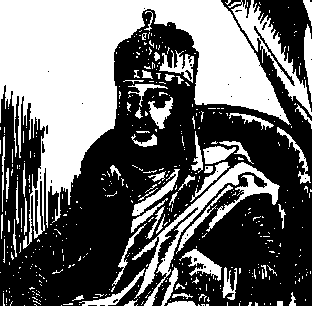Causes of the Fall of Zoroastrian Iran: by Dr. Pallan R. Ichaporia


Dear Readers:
For pleasure of your reading, I hope this is informative.
Many readers have asked me about the causes of the fall of Zoroastrian Iran - The causes are many and can not be dealt within a short article, but I will try to give a brief summary which is particularly important for our Zoroastrian children.
The Byzantine Emperor, Heraclius struck the first blow to weaken the Zoroastrian Sasanian Iran. He defeated the Persians in 622 AD and in 627 AD he invaded Atropatene (Azerbaijan) and destroyed the Great Fire Temple and entered the Tigris provinces. Chosroes Abarvez or Parviz 'the victorious' attempted to resist him but before he could do so he was treacherously murdered by his son Shiroe who took the name of Kavadh and ascended the throne as Kavadh II (Qobad) in 628 AD. Shiroe was born out of Chosroes' marriage to a Christian Princess, Shirin. This regicide was the beginning of the end of Zoroastrian Iran. It is interesting to note that Chosroes Parviz had succeeded in extending the frontiers of the Sasanian Empire almost to the limits of the Achaemenid Empire, but at the critical juncture he was betrayed by his son.
It is an irony of fate that Kavadah II who murdered his father to come to the throne died within a year in an epidemic and succeeded by his infant son Ardashir III who was assassinated by Shahrbaraz, a General of the Persian Army who seized the throne, in turn being murdered during his reign of two months. Anarchy set in and resulted in the succession of short-time rulers, Yazdegerd, the son of Shahriyar, and grand-son of Chosroe was found in Istaker fire-temple and he came to the throne in 633 AD. He became the last Sasanian King. A perfect scenario was in order for the tribal savagery of united Arab Bedouins to cast the final blow.
The prolonged exhausting hostilities reduced the might and power of both Iran and Byzantium, opening the door for a newly emerging force from the Arabian desert to challenge both the states and religions. After several encounters, the fate of the Sasanian Empire was sealed in the battle of al-Qaadisiyah (636/637 AD) on the Euphrates canal, near al-Hirah where to make matters worse, Rustam, the Sasanian Supreme Commander-in-Chief was killed. Ctesiphon, the Sasanian capital with all its vast treasures was now at the mercy of the victorious Arabs. Yezdegerd fled to Media and with the help of his Generals organized new resistance and the last battle was fought at Nehavand (642 AD), south of Hamadan which finally put an end to all hopes of regaining the Empire. This was the beginning of the darkest age of Zoroastrianism. Yezdegerd sought refuge in one province after another until at last in 651 AD, he was assassinated near Merve by a miller for his jewels clad sword. With the fall of the Empire, the fate of its religion was also sealed.
It is necessary to grasp the background of the emerging force of the Arabs to understand what made them achieve victories over one of the mightiest Empires in history. The prophet Muhammad had made Medina, his adopted city and Mecca, his birth place, centers of an Arabian movement that Muslim Arabs developed into a world wide movement by the conquest of Iran. Arab tribalism beyond urban fringes was less easily broken than idols. It was embedded in the desert sparsity that led to warfare and careful counting of a tribes' male offspring. After Mecca and Medina became Muslim, it was necessary to secure allegiance of all the other desert Arab tribal people. In the process of doing this, wars over water holes, scanty pastures, men-at-arms and camels were enlarged into international campaigns of expansion.
The vulnerability of Sasanid Zoroastrian Iran assisted the expansionist process. As noted when Yazdegerd III, the last Zoroastrian Sasanian sovereign came to the throne in 632 AD, the year of Muhammad's death, he inherited an empire weakened by Byzantine wars and internal dissension. After the sad end of the Sasanids, century after century Zoroastrian faith was persecuted in Iran and little by little it vanished, except for a few surviving adherents who remain to the present day in Yazd and a few other places. Other Zoroastrians emigrated to western India where they are now concentrated in Bombay (Mumbai). These Parsis (Persians) (Note: in the six century BC, the Persians were referred to as 'Parsa". It became 'Parsik' in the Pahlavi literature and 'Parsi' in the later Sasanian times) have preserved their sacred writings by carefully creating hand written manuscripts and faithfully following their religious tenants so also those who remained behind in Iran, preserved their ancient faith till the present times.
Presently some Parsis and Iranian Zoroastrians (after the fall of the Shah) have migrated to Western countries to better their prospects. They both are facing bravely new social and family values and their children may be at great risk of being assimilated ethically and culturally into the major religions of the West. But they do not have to fear for the worst, as the present trend towards better understanding of their religion together with inheritance strength of Zoroastrianism will give them no cause of concern in keeping their faith intact.
With kind regards,
Dr. Pallan R. Ichaporia.